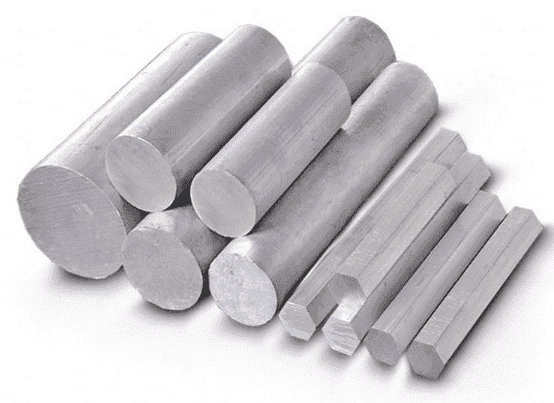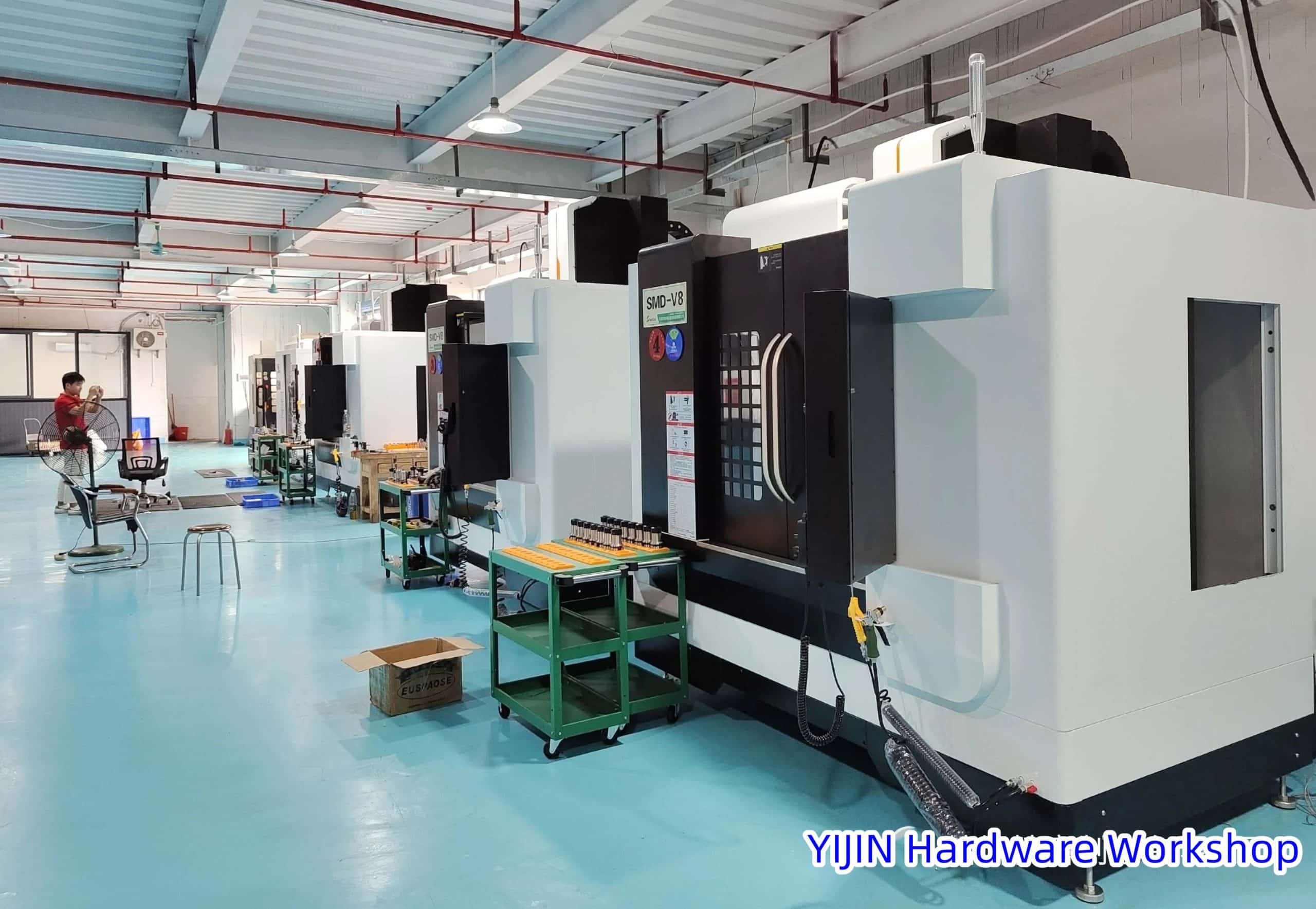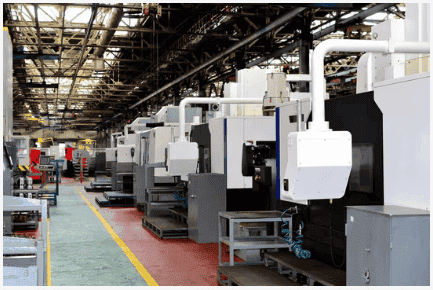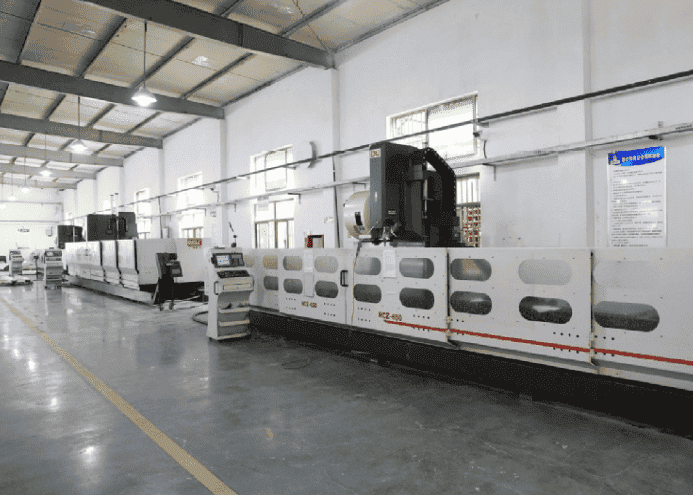Introduction
Metals play an essential role in everyday life, whether it be structurally, practically, or aesthetically. Structurally, they are used in the construction of buildings and other large structures, such as bridges and skyscrapers.
Practically, metals are used for items such as tools, cookware, and even jewelry. Aesthetically, metals can be found in artworks such as sculptures and furniture.
But what makes metal so special is its strength and durability – it is able to withstand extreme temperatures, pressure and wear and tear that would otherwise break down other materials.
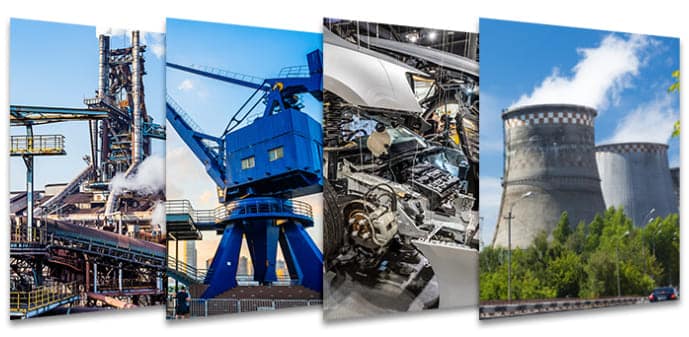
This article will explore the strength of metals: why they are strong; how this strength contributes to their various uses; and how different forms of treatment can affect their properties.
Recommended: What is the Strongest Metal In The World
Metals owe their strength primarily to their chemical composition – they contain electrically charged particles called ions which allow them to form strong bonds with other elements.
These bonds increase the stiffness of the material while also making it resistant to deformation or breaking down.
Additionally, different types of metals have varying amounts of malleability – some are easily bent without breaking while others break quickly when subjected to pressure or force.
Finally, some metals can have their properties altered through treatments such as heat treatment or cold working which change their hardness while also improving their ductility or flexibility.
The strength of metals is seen throughout everyday life in a variety of ways – from the construction industry where steel frames help support buildings up to thousands of stories tall.
To household items such as kitchenware which may use stainless steel for its sturdiness; or jewelry that requires precious metals like gold for its malleability so pieces can be designed into intricate shapes.
Furthermore, these properties can be further enhanced by applying various treatments during production processes – heat-treating steel increases its hardness so it can be used for cutting tools.
Annealing copper improves its malleability so it can be shaped into wires for electrical wiring; quenching hardened steel enhances its toughness so it does not break under stress or strain.
And carburizing aluminum increases its resistance against corrosion so it is suitable for outdoor applications like roofing panels or window frames.
Overall, metals demonstrate a unique combination of strength and ductility that makes them invaluable in many facets of modern life.
By understanding the chemical composition behind metal’s strength we can better appreciate how they are able to withstand various conditions while still being manipulated into precise shapes when necessary.
With this knowledge, we can harness metal’s properties more effectively across industries both large-scale (construction) and small-scale (jewelry).
Types of Metallic Strength
- Tensile strength: ability to withstand tension or pulling forces
- Compressive strength: ability to withstand pressure or crushing forces
- Shear strength: the ability to withstand forces applied parallel to the surface
- Torsional strength: the ability to withstand twisting forces
1-Tensile strength: ability to withstand tension or pulling forces
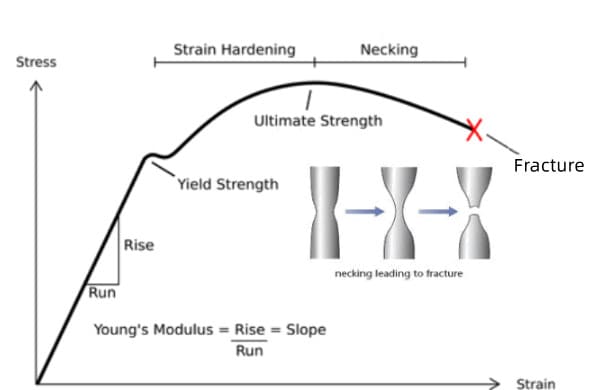
Tensile strength is a measure of how well a metal can withstand tension or pulling forces. It is the maximum stress a material can sustain without breaking, and is typically measured in megapascals (MPa).
Metals that have higher tensile strength are able to stretch farther before they break, allowing them to take on more force than metals with lower tensile strength before they eventually fail.
Tensile strength also differs between different types of metals due to their unique microstructures.
For example, steel has a higher tensile strength than aluminum because its crystalline structure is more organized and stronger than aluminum’s amorphous structure.
Additionally, heat treatment and cold working can increase the tensile strength of some metals by increasing their hardness and making them less prone to deformation.
2-Compressive strength: ability to withstand pressure or crushing forces
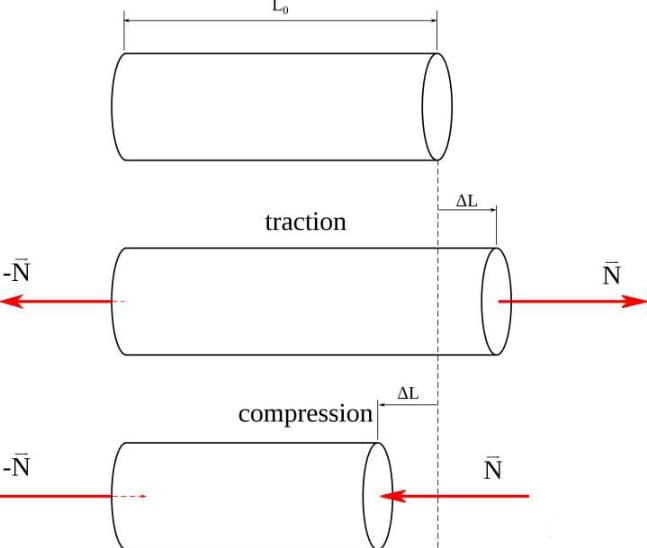
Compressive strength is the capability of a metallic material to resist compressive stress, which is a force that acts to reduce the size of an object by pushing on its opposite faces.
It is typically measured as the maximum stress that can be applied before a specimen permanently deforms or fails.
Compressive strength is important in engineering applications since it provides insight into how well a material can bear the load and withstand forces without fracturing or suffering permanent damage.
This strength does not remain constant in all directions and will vary depending on the orientation of the material relative to the applied force. Compression tests are used to determine this variation.
3-Shear strength: ability to withstand forces applied parallel to the surface
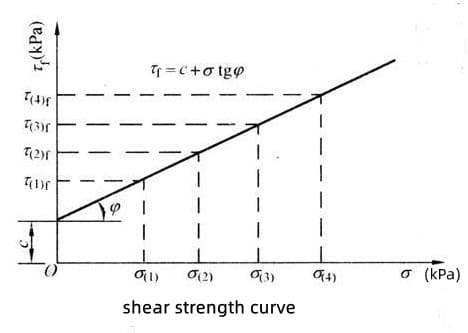
Shear strength is an important factor to consider when choosing the right type of metal for a specific application.
It is the ability to resist forces applied parallel to the surface of the metal, such as those produced by cutting, punching, or bending.
This type of strength is particularly important for applications like construction and manufacturing where metals are subjected to heavy stress.
Shear strength can also be affected by factors such as temperature, composition, grain size, mechanical treatments, and aging processes.
Different metals have different levels of shear strength which makes it important to choose the most appropriate material depending on the application requirements.
Additionally, a variety of treatments can be used to increase the shear strength of a metal if needed.
4-Torsional strength: ability to withstand twisting forces
Torsional strength is the ability of a metal to be able to resist and withstand twisting forces, such as those caused by torque, tension, compression, and shear.
This type of strength is important in many applications which require the manipulation of metal components in order to create a design or product.
The strength of a metal is determined by its ability to absorb and resist torsional forces without deforming or breaking.
Torsional strength can be improved by increasing the ductility, elasticity, and resilience of the metal, as well as by strengthening it through stress relief procedures or heat treatments.
Additionally, metals with high hardness levels tend to have greater torsional strength than softer metals.
Factors that Affect the Strength of Metals
- Composition and microstructure of the metal.
- Heat treatment and processing techniques.
- Impurities and defects in the metal
Composition and microstructure of the metal
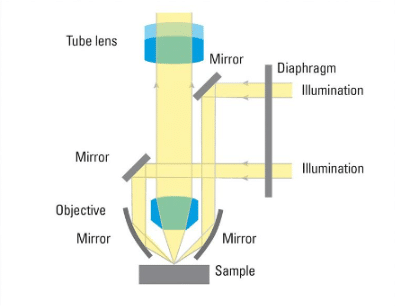
The composition and microstructure of metals significantly affect their strength.
The properties of the metal are determined by its chemical makeup, as well as the way the individual atoms are arranged in terms of size, shape and orientation.
Metals with higher amounts of alloying elements can result in increased strength and hardness.
Microstructures that have a homogenous grain structure, with fewer impurities or defects, are also beneficial for strength.
This can be achieved through thermal treatments such as annealing or quenching to change the arrangement of atoms within the metal and refine its structure.
Additionally, certain additive manufacturing processes like powder bed fusion have demonstrated higher levels of strength.
Compared to traditional manufacturing techniques due to improved control over material composition and microstructure during fabrication.
Heat treatment and processing techniques
Heat treatment and processing techniques are key factors that affect the strength of metals. Through heat treatments, the mechanical properties of metals such as ductility, hardness, and strength can be modified.
For instance, by increasing the temperature of a metal alloy, its grain structure can be altered, making it more malleable.
Changing this grain structure also increases the metal’s strength by allowing defects in the structure to heal or form new bonds as they cool down.
Similarly, specific processing techniques such as cold working or hot working can also increase the strength of metals by introducing plastic deformation into their crystalline structure.
This rearranges the atoms within a material to form new planes and lines of atoms which helps resist external forces better than its original structure.
Overall, heat treatments and processing techniques are both important ways to further enhance the strength and durability of metal.
Impurities and defects in the metal

Impurities and defects in the metal structure can have a significant effect on the strength of the material.
Metals with impurities or defects will typically have reduced strength, ductility, and toughness when compared to the same material without these impurities or defects.
Impurities can include foreign elements such as carbon, sulfur, phosphorus, nitrogen, or other elements that are not part of the desired metallic element.
These foreign elements can reduce mechanical properties by weakening grain boundaries or by introducing internal stresses in the metal lattice structure.
Defects occur during casting and forging processes as well as during fabrication operations such as machining and welding operations.
These may include surface cracks, cavities, surface roughness, seams, discontinuities in cross-sectional area, unmelted particles, and many more.
The presence of all these impurities and defects can cause a decrease in both strength and ductility of the metal which will limit its load-bearing capacity and ability to withstand external forces.
Why Metal Strength Is So Important in Manufacturing?
Here are a few reasons why metal strength is so important in manufacturing:
- Load-bearing capacity: Strong metals are able to support heavy loads without breaking or deforming, which makes them suitable for use in structures such as buildings, bridges, and infrastructure.
- Durability: Strong metals are less likely to break or fail under stress, which makes them more durable and longer-lasting. This can help to reduce maintenance costs and improve the reliability of products and structures.
- Safety: The strength of metal can be a factor in ensuring the safety of products and structures. For example, the strength of a car’s frame or the bolts on a bridge can be critical in preventing accidents or collapses.
- Performance: The strength of a metal can affect its performance in various applications. For example, strong metals are often used in the construction of aircraft, automobiles, and other types of machinery to ensure that they are able to withstand the stresses of operation.
Examples of Strong Metals
Iron and steel:
Iron and steel are two of the strongest metals available, making them incredibly useful in construction and manufacturing.
Both materials have high tensile and compressive strength, meaning they can withstand great amounts of pressure without breaking or bending.
This makes them ideal for structural supports, frames, braces, beams, and even tools. The combination of low weight and great strength also makes them a popular choice for armored vehicles such as tanks.
In addition to these uses, iron and steel are used in a variety of other applications due to their corrosion resistance which can be further improved with various treatments like galvanizing.
They are also relatively inexpensive compared to other metals and alloys, making them an economical choice when it comes to materials selection.
Aluminum:
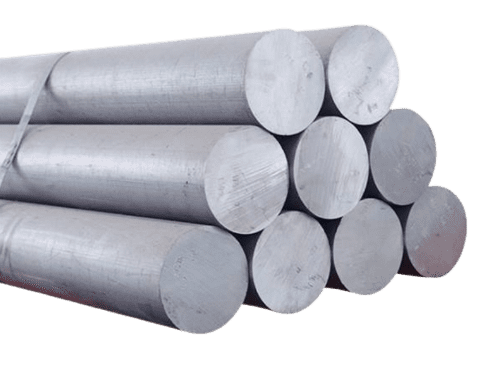
Aluminum is one of the strongest metals and is widely used in aircraft and automotive industries due to its high strength-to-weight ratio.
Recommended: CNC Machining For Aluminum Parts
This metal is ideal for components that require a strong material but need to be lightweight, like the frames of cars, aircraft, and buildings.
Its ductility also makes it easy to form complex shapes without compromising its strength.
Additionally, aluminum offers excellent corrosion resistance and can withstand extreme temperatures without losing its mechanical properties.
It’s considered an environmentally friendly material because it’s 100% recyclable, making it an ideal choice for production processes that value sustainability.
Titanium:

Titanium is a strong metal that is used extensively in the aerospace and medical industries due to its impressive strength and corrosion resistance.
It has a higher tensile strength than most other natural metals, making it ideal for applications where high-strength materials are essential.
Its low weight and ability to be heat-treated make it one of the most sought-after metals in the industry.
Additionally, titanium is resistant to various acids, bases, and saline solutions – which makes it suitable for use within marine environments.
It also exhibits excellent fatigue properties and good weldability, meaning that it can be easily joined with other metals for optimum efficacy.
Conclusion
Metallic strength is a critical factor in many applications, and understanding the different types of strength and knowing how they are affected by various factors can be invaluable for engineers, architects, and other professionals.
Strength is an important characteristic of metals that must be considered when dealing with any engineering project.
Tensile strength, yield strength, compressive strength, fatigue strength, impact resistance, and hardness are all types of metallic strength that play a role in different industries.
Factors such as heat treatment, alloying elements, stress concentration, grain size, and structure can all have an effect on the strength of metals.
It is important to consider these factors when selecting the type of metal for a particular application or industry.
By having a better understanding of metallic strengths and the factors that affect them, engineers can make more informed decisions about which material to use in their projects.
This will help ensure that the right materials are being used for any given application so that projects can be completed safely and efficiently.
FAQS
What Is the Property Of Strength?
Strength is a measure of the ability of a material or structure to withstand forces that try to deform or break it. It is an important property that is taken into consideration when designing and constructing structures and products.
There are several different types of strength that can be relevant, depending on the context and the type of material or structure in question. These types of strength include:
Tensile strength: This is the maximum amount of tensile (stretching) stress that a material can withstand before it breaks.
Compressive strength: This is the maximum amount of compressive (squeezing) stress that a material can withstand before it breaks.
Shear strength: This is the maximum amount of shear (sliding) stress that a material can withstand before it breaks.
Torsional strength: This is the maximum amount of torsional (twisting) stress that a material can withstand before it breaks.
Yield strength: This is the stress at which a material begins to permanently deform, rather than just stretch elastically.
What Determines The Strength Of A Metal?
There are several factors that can influence the strength of a metal, including its atomic structure, chemical composition, and microstructure.
Atomic structure: The strength of a metal can be influenced by the arrangement of its atoms. For example, metals with a face-centered cubic (FCC) or body-centered cubic (BCC) crystal structure tend to be stronger than those with a hexagonal close-packed (HCP) crystal structure.
Chemical composition: The presence of certain elements in the alloy can also influence the strength of a metal. For example, the addition of alloying elements such as chromium, molybdenum, and vanadium can increase the strength of steel.
Microstructure: The strength of a metal can also be influenced by its microstructure, which refers to the arrangement and size of the grains within the metal. For example, metals with a fine grain structure tend to be stronger than those with a coarser grain structure.
Do Metals Have High Strength?
Many metals are known for their high strength, which makes them useful for a wide range of applications. The strength of a metal can be influenced by several factors, including its atomic structure, chemical composition, and microstructure.
Some common metals that are known for their high strength include:
Steel: Steel is an alloy of iron and carbon, and it is known for its high strength and durability. It is widely used in construction, manufacturing, and other applications where strength is important.
Aluminum: Aluminum is a lightweight metal that is known for its high strength-to-weight ratio. It is commonly used in aircraft, automobiles, and other applications where weight is a concern.
Copper: Copper is a ductile metal that is known for its high strength and resistance to fatigue. It is commonly used in electrical wiring and other applications where conductivity is important.
Titanium: Titanium is a strong, lightweight metal that is known for its high strength and corrosion resistance. It is commonly used in aerospace and medical applications.
Read more: Titanium Vs. Stainless Steel, What is the Difference?
Magnesium: Magnesium is a lightweight metal that is known for its high strength and stiffness. It is commonly used in the automotive industry and other applications where weight is a concern.
Read more: Magnesium Machining
 Call Us Today! (+86) 188-2253-7569
Call Us Today! (+86) 188-2253-7569